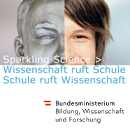“One day there will be …”
Circular Materials Narratives for Futures in the Anthropocene
Starting from fairy tales in their material contexts, primary school pupils from Lower Austria explore circular use of resources. As futurologists, the Citizen Scientists explore the knowledge of regional raw materials at their school sites (e.g. coal, graphite, gravel, stone, sand, wood, rapeseed, maize, sugar beet) and research on how the history of mankind can be rewritten for the future as a circular society, in which raw materials are not disposed of as plastic waste, but are reused as valuable materials.
Their research method is the Future Workshop with its three phases, adapted for primary schools. In the first phase the pupils look at the valuable materials in fairy tales. With this new perspective, they go into the circular workshop, and gather knowledge about recyclable materials through excursions to storage sites, interviews with experts, and insights into further processing. In the third phase, the future workshop, they rewrite the fairy tales: "One day there will be ...". The stories about recyclable materials emerge as futures narratives.
The cultural sustainability research conducted with the students focuses on two intertwined questions: How does science communication succeed with the help of material stories? Which teaching-learning processes foster Futures Literacy, the ability to shape sustainable futures? The material cycles and utilisation contexts of regional raw materials researched by the Citizen Scientists serve as data material, as do the material stories for possible futures in the Anthropocene, the 'age of humankind'. In the Anthropocene, the interconnection of humans and nature, culture and technology becomes visible, because the massive interventions of humans bring the earth's systems to their limits. New stories of life in a circular society create appreciation for planet Earth.
(Photocredit © Tutschek/PH NÖ)


